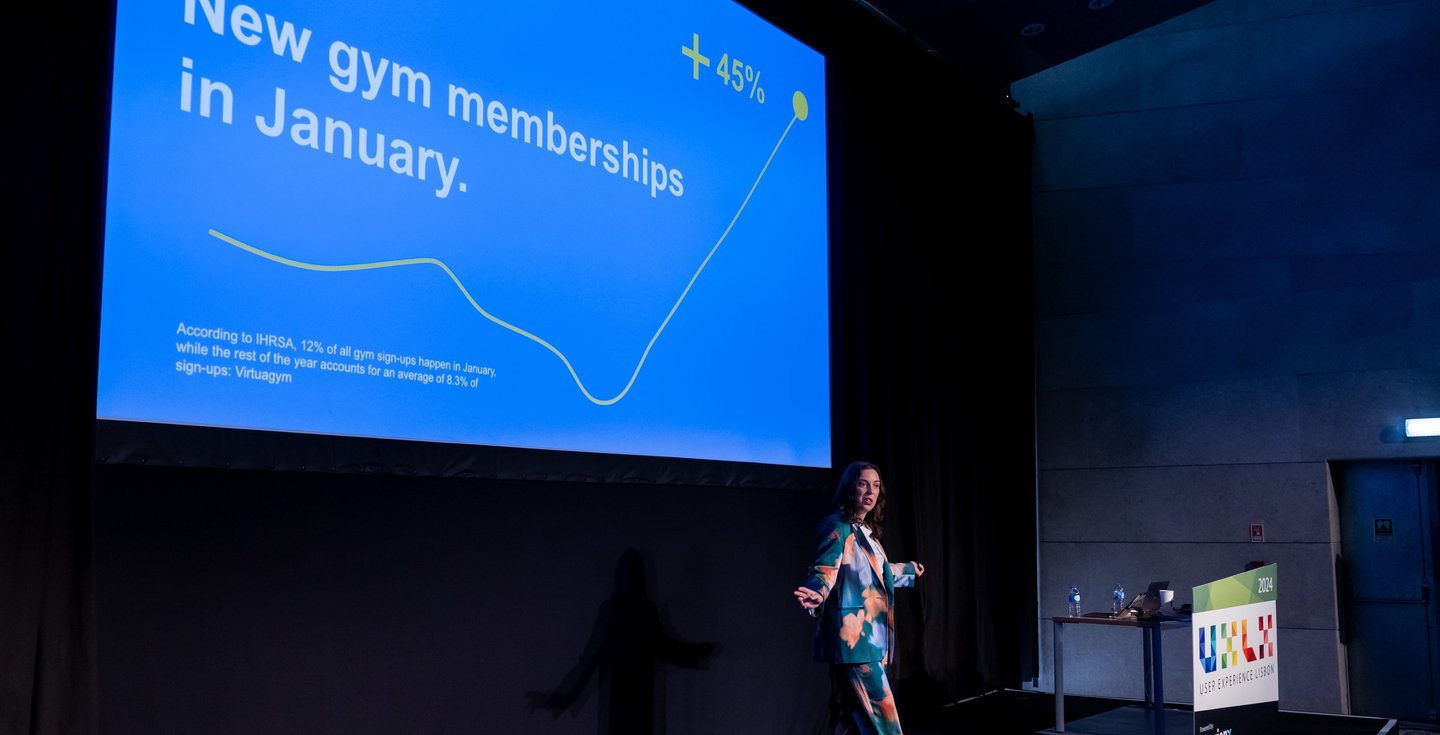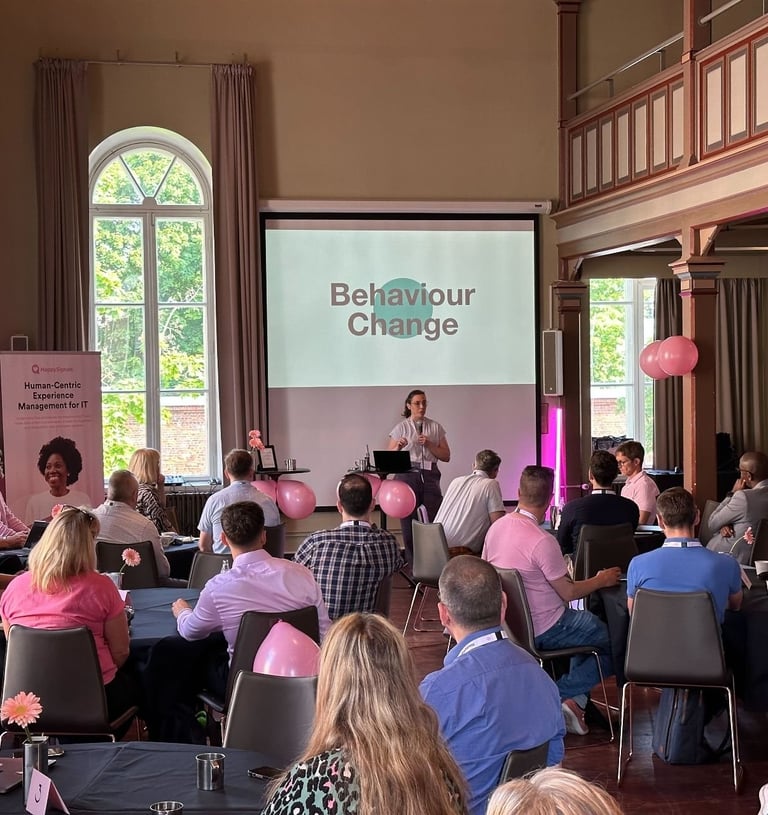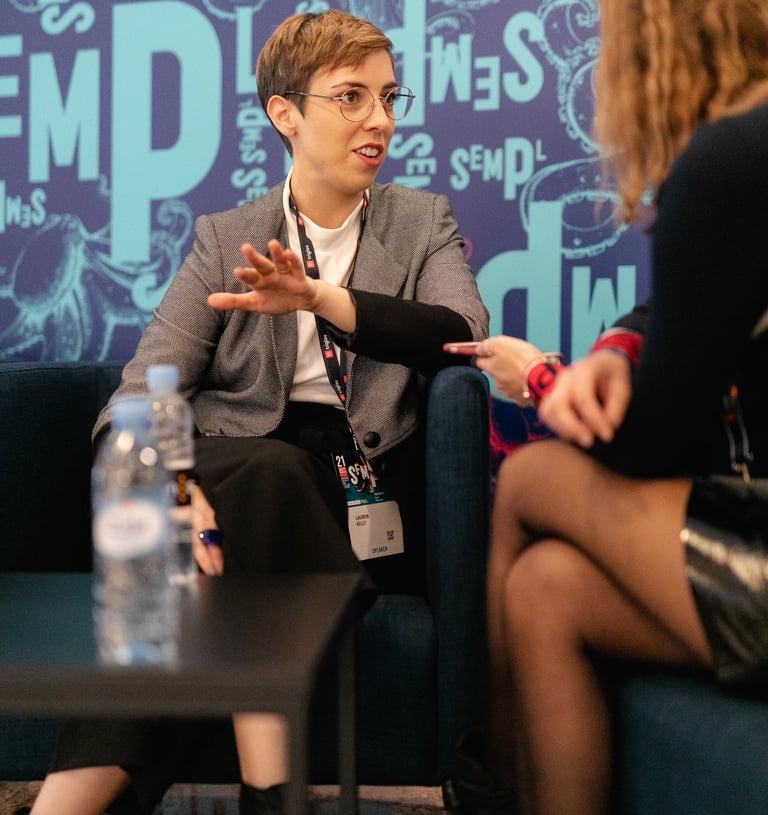Speaking
I don’t do theory for theory’s sake. My talks are story-led, plain-English, with a streak of British wit... and always packed with frameworks or tools people can use the very next day.
They make behaviour the piece that holds everything together, instead of the piece quietly pulling it apart.
On stage I blend design and behavioural science. Off stage, I stay close to the conference. You’ll find me swapping notes with delegates, making the science simple over coffee, or digging into a tricky challenge in the event chat. Honestly, it's my favourite part.
I’ve spoken at global conferences, trained teams in 20+ countries, and worked with governments, startups, and household brands. Every talk has one aim: to leave people saying, “I can use this right now.”


Signature Talks
Format
Keynote: 30–45 minutes. Story-led, packed with takeaways.
Workshop / Clinic: 60–120 minutes. Hands-on, applied to your context (great for deep-dive sessions or partner programmes)
Panel / Fireside Chat: Conversational, tailored to your event theme
Travel: I am both a British Citizen and Irish Citizen. So can travel freely to UK and Europe.
Every talk can be tailored to your audience and industry.
Got something specific in mind? I build bespoke talks too.
Yes at Scale: Make the Right Thing the Easy Thing
Most teams launch change. Few make it stick. This talk shows the system that does.
The 8 Principles of Yes make “what good looks like” obvious and repeatable. Attendees leave with a clear model, a checklist, and three instant plays they can use tomorrow.
Best for: product, design, change, leadership.
Takeaways:
A plain-English checklist for making adoption easy
How to clear friction before adding nudges
When to use defaults, social proof, and support plays
How to score work with the Yes Score
The Three Loops of Behaviour That Stick
Most products and programmes only design for one loop. Sometimes two. That’s why adoption stalls.
This talk introduces a memorable framework: the Action Loop (what gets people started), the Habit Loop (what keeps them coming back), and the Recovery Loop (what brings them back after drift). Easy to teach, easy to use and with examples from UX, health, sustainability, and change depending on your audience.
Best for: UX, design, change and industries like health, sustainability, finance.
Takeaways:
A new model for adoption and retention
How to design across all three loops
Practical fixes for drop-off and churn
Trust Before Tactics: Building Confidence in AI (and Everything Else)
If people don’t trust it, they won’t use it. Doesn’t matter how “smart” it is.
This talk introduces the Trust Compass: ten factors that decide whether people lean in or step back. It’s a fast, practical way to spot trust gaps and fix them before adoption stalls. Works for AI, but just as useful for policy, platforms, and internal tools.
Best for: AI, ops, risk & compliance, leadership.
Takeaways:
Diagnose trust gaps in minutes, not months
Make competence, honesty, and care visible
Write clear promises and keep them
Repair broken trust without relaunching
Why White-Space Habits Matter for Innovation
Most teams chase features. The best teams chase habits.
And not the obvious ones. The overlooked, in-between routines that already shape people’s days. The scroll before sleep, the silence before a call connects, the scramble before a retro. I call these white-space habits. Spot one, and you’re not just fixing a clunky moment. You’re building a moat your competitors can’t cross.
Best for: product, service design, innovation.
Takeaways:
How to spot white-space habits in daily life
How to design for them without disruption
Why they unlock growth competitors can’t copy
The Case for Behaviour Owners: Building Behavioural Literacy in Organisations.
We have product owners. Service owners. Change leads.
But when everything depends on behaviour, who owns that?
This talk makes the case for behavioural literacy across organisations, and the role of a dedicated Behaviour Owner. It gives leaders and L&D teams a shared language for spotting behaviours, diagnosing friction, and treating behaviour as a managed asset.
Best for: internal leadership events, tech teams, L&D, change conferences.
Takeaways:
Why behaviour needs ownership to hold
A new language for making behaviour visible
How to build capability across teams


Previous Audiences
I've talked an internal conferences, team away days, and international conferences. Including UXLx Lisbon, PwC Change Conference (twice), WUD Estonia (twice), Whext Brazil, SEMPL Slovenia, BrandFestival Budapest, Golden Drum, Service Design Network, People of Research.
Highlights


People of Research 2024
Behavioural research planning.






Planning an event?
Got a science slot to fill?
Let’s make it behavioural science your audience can actually use.
Email me at lauren@laurenkelly.me
© 2025, Alterkind Ltd. All rights reserved.